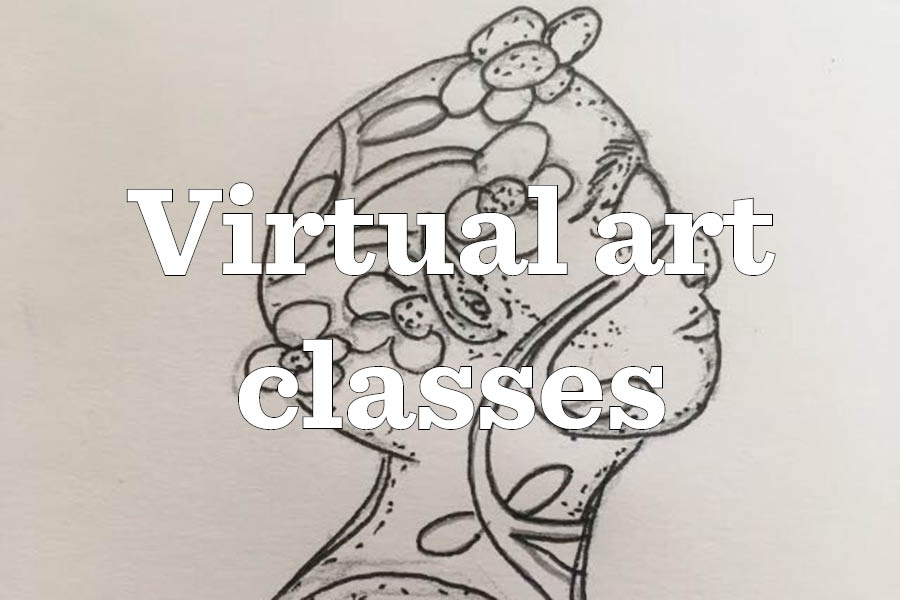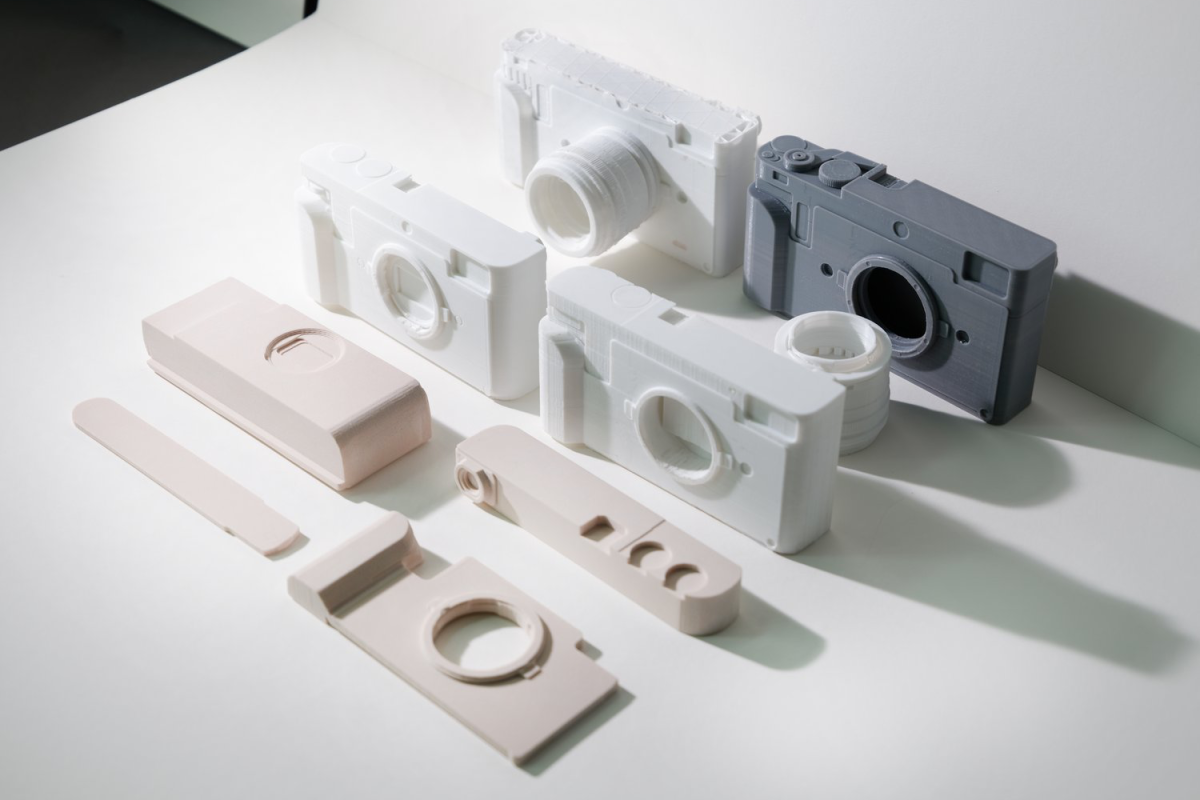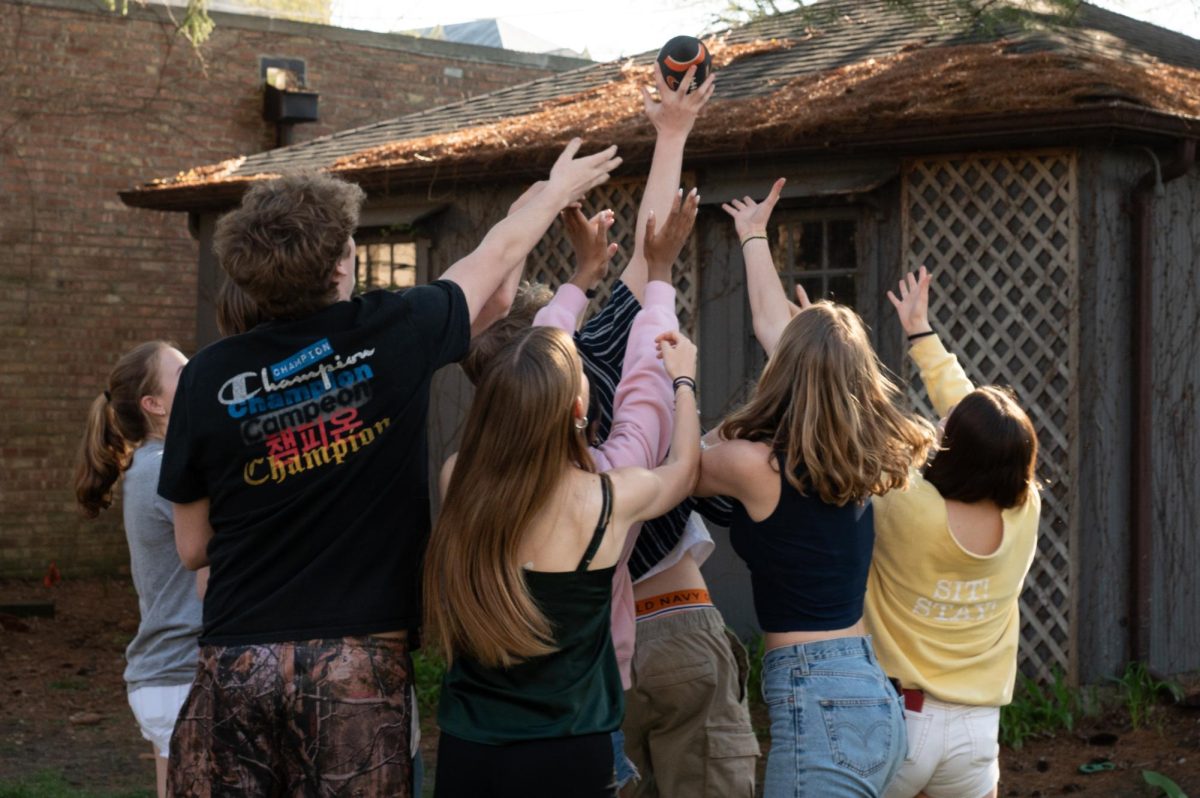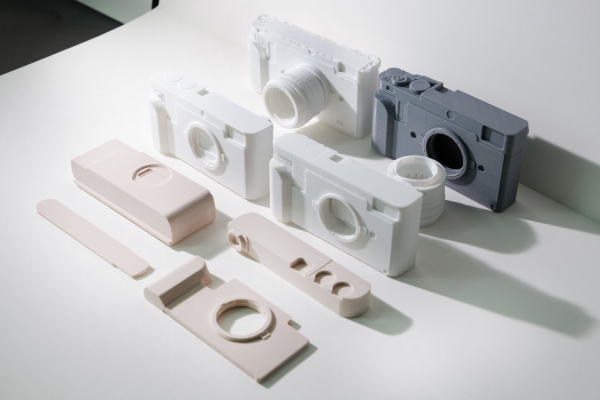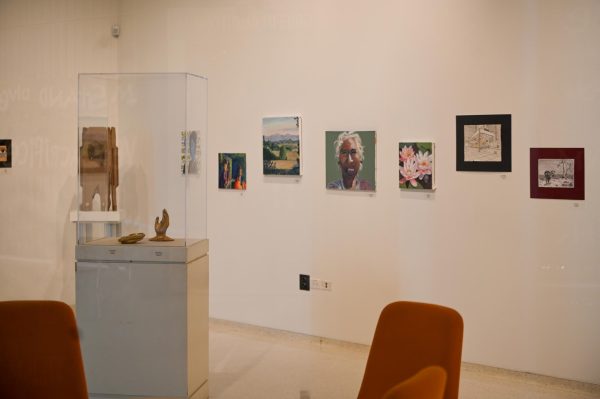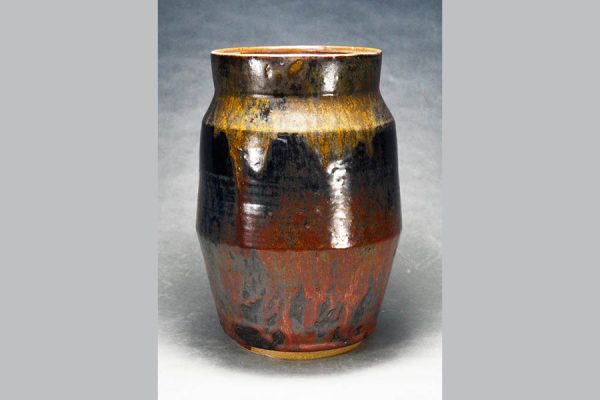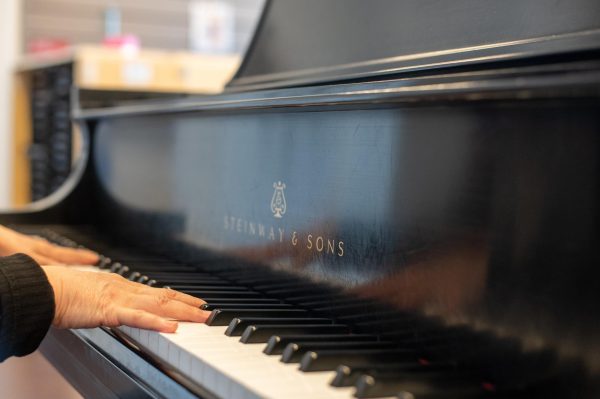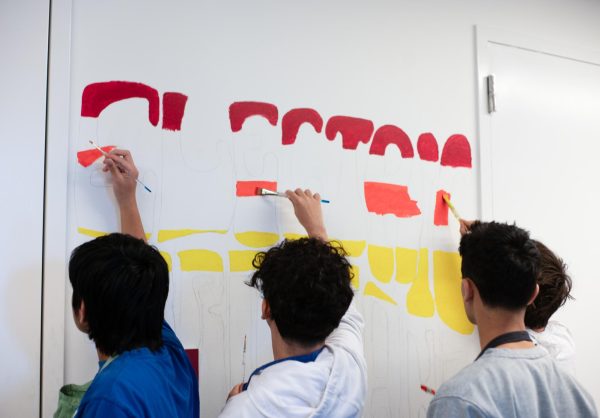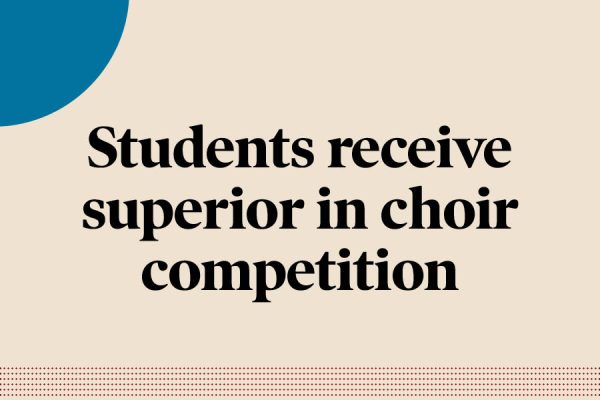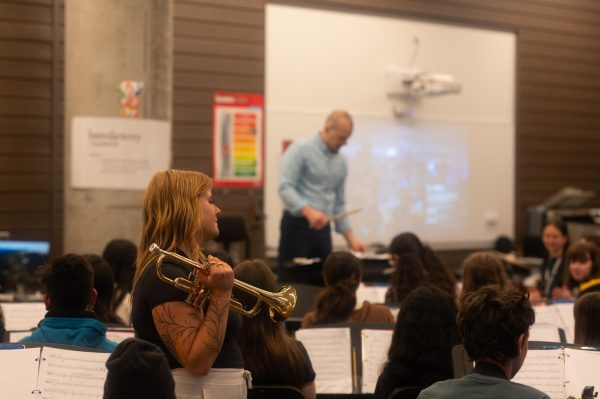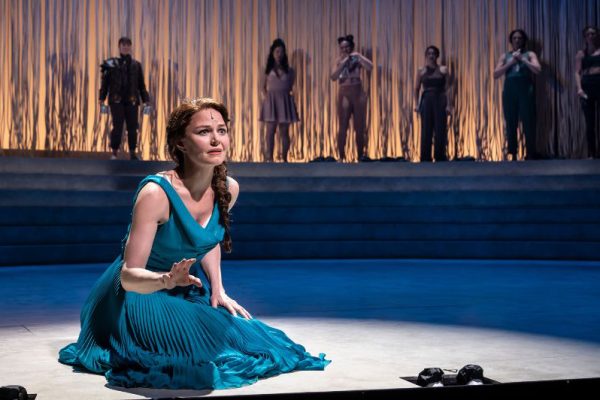Art classes adapt to accommodate limited materials, lack of hands-on learning
Stella Heon
Junior Stella Heon finds a more positive headspace through her arts classes — especially during the pandemic.
May 7, 2020
Elizabeth Park puts down the mats and prepares her desk for the inevitable mess that will be left on it. Elizabeth’s sculpture teacher, Candice Latimer gave her the mats before they left school back in March. Elizabeth takes out the slightly-dried clay structure from its plastic wrap protection, sets it on the mat and continues to mold its face into a human-resembling head. She knows that since school will not return this year her sculpture, along with everyone else’s in the class, will not be finished by being fired in a kiln.
All classes are experiencing struggles with online learning, but art classes come with their own unique set of challenges. With limited materials, increased set up times and a lack of hands on learning, art classes have had to adapt quickly.
Sunny Neater, co-chair of the fine arts department, explained that students at home don’t have a studio like at school.
“What we are really grappling with is coming up with engaging projects that people can do at home with very limited supplies,” Ms. Neater said.
One of the main problems of continuing art classes from home is finding a wider variety of projects given the constraints. These include drawing and sketching assignments, sculpting when possible, and for some classes watching videos about art and artists.
“I don’t want to just have my students do a still live drawing every week,” Ms. Neater said. “I want to provide more creative ideas and more expansive ideas and really mix it up.”
While all of the art classes are being impacted by having classes online, there are efforts in the fine arts department to give students a place to get their mind off of current events.
“I think as a teacher you need to dig deep and think about your students and what might they enjoy doing and what would help them get out of that COVID headspace to get into that more relaxed creative-flow headspace, while also keeping in mind how to keep work relevant to lived experience,” Ms. Neater said.
Stella Heon, a junior, has been able to find a more positive headspace through her art classes.
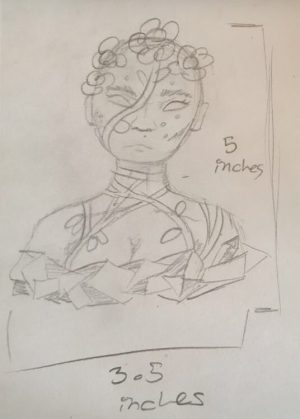
“Now it is just like a relaxation exercise,” she said. “Whenever I have an excuse to make something new, I will take it because the act of creation uses so many parts of your brain. It is difficult to be consumed by some sort of overwhelming emotion or looming dread.”
Sculpture teacher Ms. Latimer is one of the art teachers that has had to change her plans for her high school sculpture classes.
“We are really exploring what could be considered an art material, and how we bring things from the virtual world into the physical space,” she said.
Due to some students not being able to work with clay Ms. Latimer has had the students work with drawing instead. She explained that since they were in a unit learning about proportions of the human face, it translated fairly seamlessly to drawing.
Stella, a student in Ms. Latimer’s class, has found this change helpful. After classes were moved online she took the option to draw instead of creating her sculpture out of clay.
She explained, “I’m just not that into the idea of having a massive, fragile clay bust sit in my room for the whole summer, so I’m going to be doing the portrait.”




